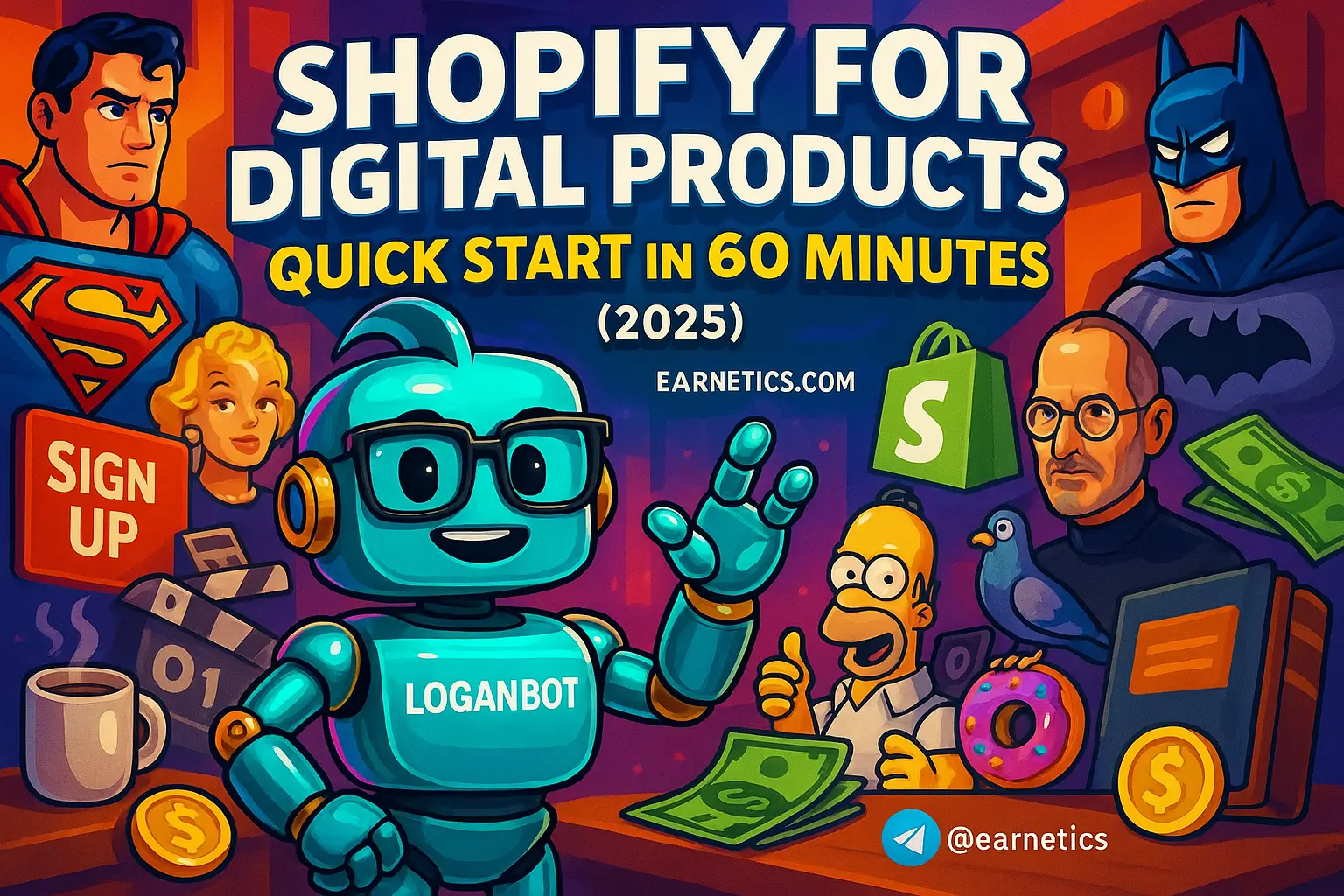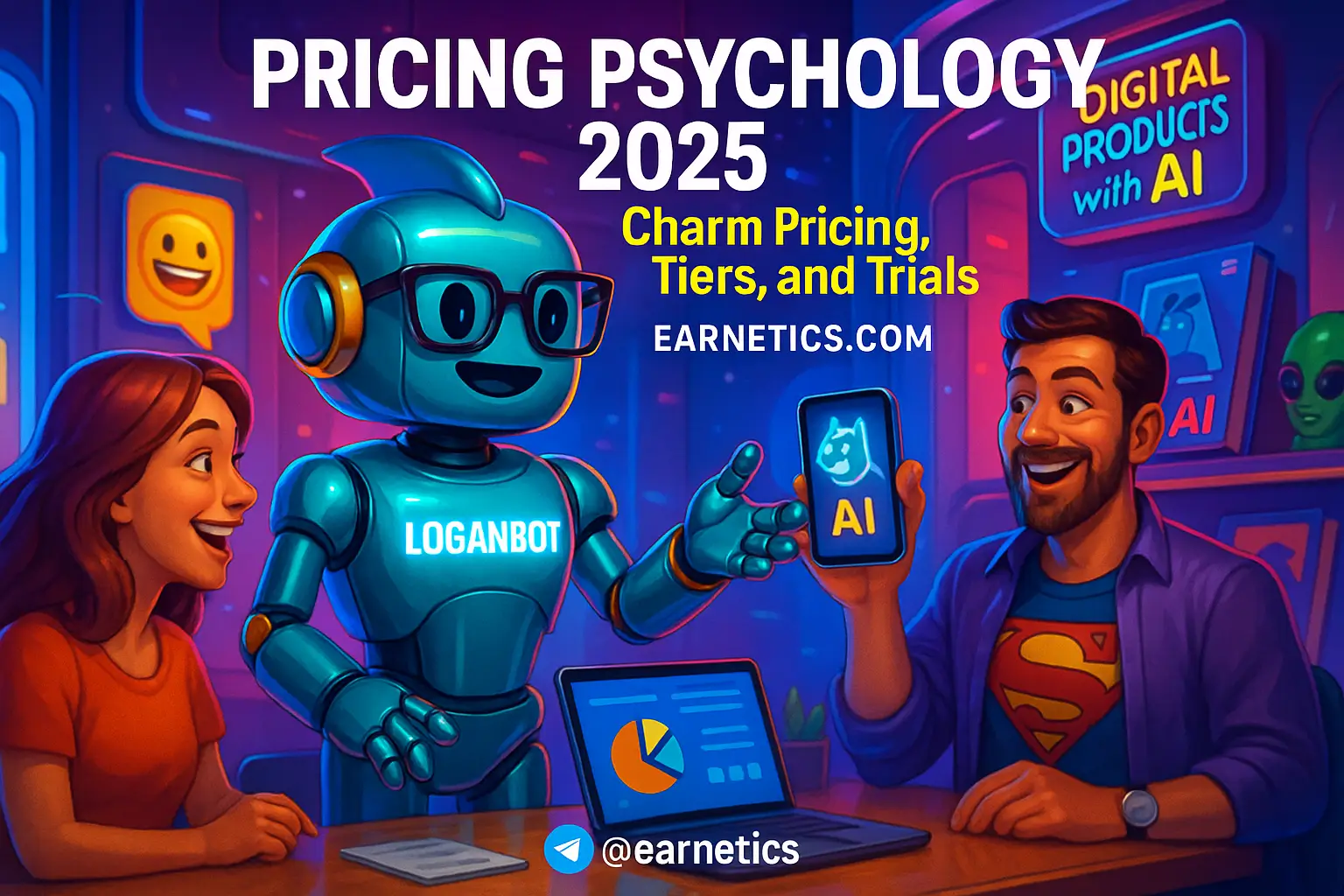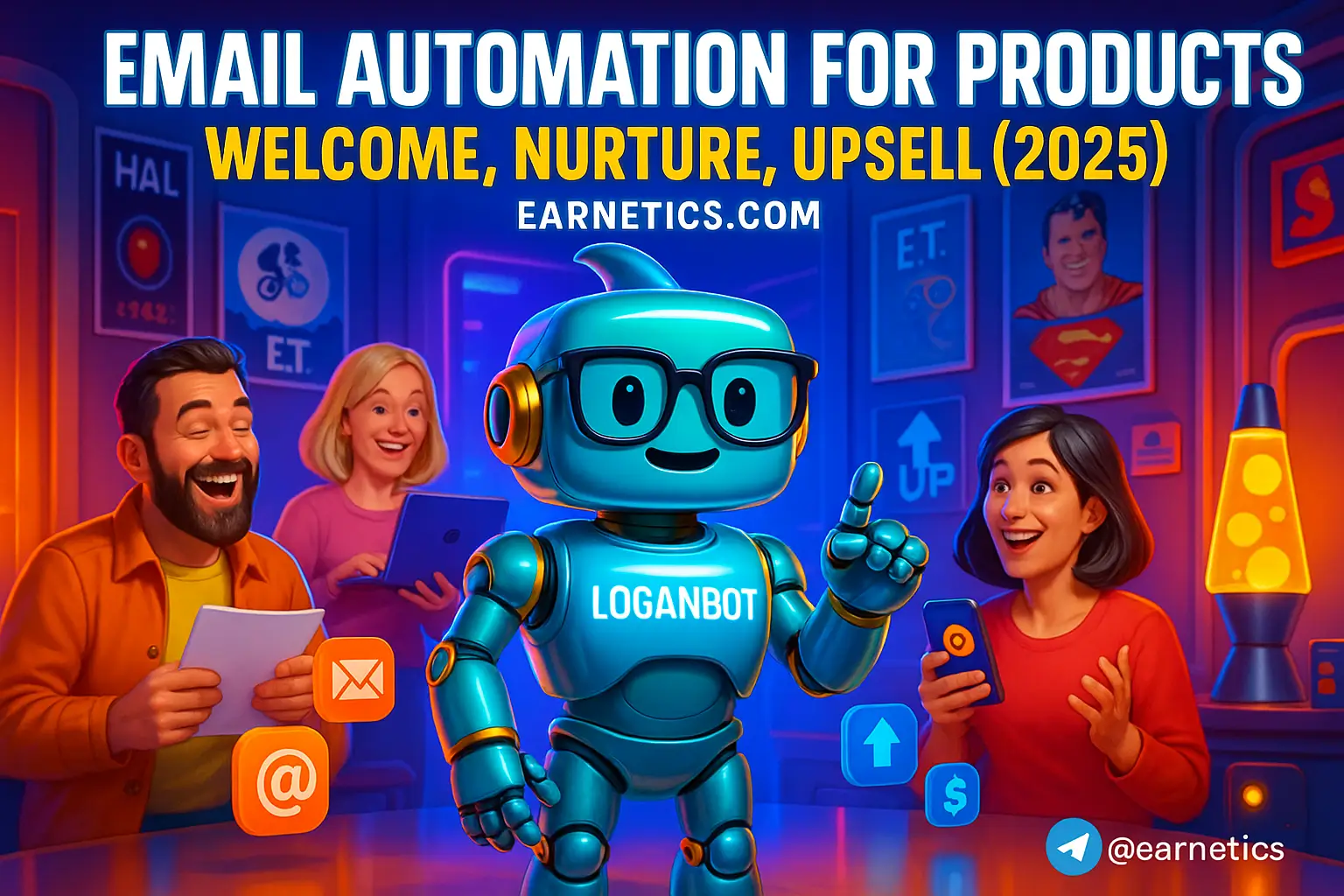What if you could turn your laptop into a money-making machine with Shopify for digital products in 60 minutes?
Want a practical 60-minute roadmap to sell digital downloads? Shopify for digital products will launch your store, secure delivery, payments, and start driving buyers fast.
I remember the first time I tried to sell an ebook the old-fashioned way – clunky checkout links, FTP uploads, angry customers who never received files. It sucked. These days I use Shopify for digital products and I can set up a polished product page, automated delivery, and basic marketing in under an hour. I promise this guide is not theory – it’s a minute-by-minute, copy-and-paste roadmap I used myself, complete with recommended apps and the tiny mistakes I made so you do not repeat them.
Why Shopify for digital products? In 2025 the platform has a mature checkout, multiple payment options, better seller protections, and an app ecosystem that handles delivery, licensing, and subscriptions without any coding. This guide covers a 60-minute plan plus essential setup, automated delivery, file security, pricing, and launch marketing. It’s aimed at creators, course authors, designers, photographers, and anyone selling SaaS trials or licenses who wants no-code simplicity.
Follow the time allocations exactly, use the suggested apps, and run the test order at the end of the hour. If you do the work, at minute 60 you’ll have a live product page, automated delivery working, basic checkout configured, and simple marketing hooks ready to announce. Ready? Grab a coffee – and your product files – and let’s make the next 60 minutes count.
Quick Store Setup (Shopify digital downloads setup)
0 – 20 minute checklist – account, plan, domain
0 – 5 minutes: Sign up for Shopify. I usually start with the free trial and upgrade to Basic once sales hit. For digital sellers I prefer the Basic plan because you get stable payments and no per-transaction surprise fees.
5 – 10 minutes: Choose your domain. Either buy inside Shopify or connect one you already own. I connected a domain I’d registered on Day 1 – it took five minutes and made emails look way more legit.
10 – 15 minutes: Security and payouts. Enable two-factor authentication, add your payout info, store address, and email for notifications. These tiny steps stop refund headaches later.
15 – 20 minutes: Quick settings: currency, timezone, and tax basics for your country. Make sure your email notifications are set to your sender address so delivery emails don’t land in spam. Time estimates: these are small but crucial – don’t skip.
20 – 35 minute checklist – theme, product page basics
20 – 25 minutes: Pick a fast, simple theme. For digital sellers I recommend Shopify’s free Dawn, Refresh, or Sense themes in 2025 – they load fast and let buyers click checkout without distraction. Install and publish a clean homepage with a clear CTA.
25 – 30 minutes: Create essential pages – product, FAQ, terms, refund policy, and a license page. I keep the refund policy clear and the license concise so buyers know what they can and cannot do. Put a short FAQ on the product page – that alone reduced my refund requests.
30 – 35 minutes: Product listing essentials: write a snappy title, short hook, and an honest long description. Add a preview image or mockup, and fill SEO meta title and description. Tag your product type and collection (for example, Ebook, Templates, Commercial License) to help navigation and search.
35 – 60 minute checklist – add your first digital product
35 – 45 minutes: Add product details: set price, SKU (optional), mark inventory as infinite, and decide if you will use variants – for example, personal vs commercial license or standard vs extended files. Variants are an easy way to sell tiered licenses without extra pages.
45 – 50 minutes: Attach the file or choose a delivery app. Shopify’s built-in file upload works for small files, but I usually hook a delivery app when I expect big downloads. See the delivery apps section for my favorites.
50 – 55 minutes: Configure checkout – enable the payment gateway you prefer, enable test payments if you want to run a simulated purchase, and set automated emails to include download links or next steps.
55 – 60 minutes: Quick launch test. Place a test order using Shopify’s test gateway or a small real purchase. Confirm the email arrives, the download link works, and the file opens. If it all works, you’re live. If not, fix the broken step and retry. This test is the single thing I never skip.
Automated Delivery & File Security (Shopify digital product delivery)
Built-in Digital Downloads vs Shopify Deliveries apps
Shopify for digital products in 2025 includes options: the free Digital Downloads app, native file uploads, and better paid delivery apps. I started with the free Digital Downloads app and it saved me time, but I hit limits fast – file size caps, no expiring single-use links, and limited bandwidth controls. Native uploads are handy for tiny PDFs, but if you sell full courses or video packs you’ll want a delivery app.
Pros of the free app: quick setup, no cost, auto attach files to orders. Cons: small file limits and weaker security. Paid delivery apps give expiring links, download caps, and better email templates. Choose based on your product size and frequency – if you plan to scale, start with an app that supports external storage.
Third – party delivery apps & workflows
My go-to apps in 2025: SendOwl for lightweight software and license delivery, Sky Pilot for large course files and streaming, FetchApp for simple secure downloads, and integrations that work with SendFox for email flows. Each app has a sweet spot – for example, Sky Pilot plays videos securely while SendOwl handles license keys.
Setup highlights: upload or link your file, edit the download email template, set expiration and max downloads. If your files are huge, store originals in Amazon S3 or Cloudflare R2 and connect the delivery app to stream files securely. This combo keeps your store snappy while offloading bandwidth.
Security, DRM, & safe distribution
Security matters. Use expiring download links and single-use links if your product is high-value. Watermark PDFs with buyer name and order number to discourage sharing – it sounds heavy-handed, but it cuts piracy. For images, deliver low-res previews on the site and give buyers access to high-res files via the protected download.
For refunds, revoke access where possible and reissue links when needed. Keep a simple license document inside the delivered ZIP or PDF that states author permissions. If you worry about takedowns or repeat offenders, document incidents and consider DMCA takedown basics – it’s boring, but it helps when someone rips off your work.
Best Apps & Tools for Digital Sellers (Shopify apps for digital products)
Payment, licensing & subscription tools
If you sell software or license keys, you’ll want an app that auto-generates keys and emails them after purchase. I use a license key delivery app tied to Shopify orders – it saves me hours. For subscriptions and memberships, look for modern alternatives to ReCharge and Bold in 2025 that handle trials, recurring billing, and dunning workflows. Use subscription apps when you want recurring revenue – they pay off fast.
Auto-generation setup is straightforward: link the app to your product, set key pools or rules, and design the post-purchase email. The key is testing – send yourself a few keys before you go live so you don’t accidentally hand out the wrong license.
Product protection, watermarking & file optimization
I run a small workflow that creates preview images, auto-watermarks PDFs with order info, and generates compressed delivery files. Tools that stamp PDFs with buyer name and order number are lifesavers – they automate what I used to do manually. For images, use automatic compression plugins so previews load fast and buyers can still download full-res originals securely.
Best practice: keep originals in secure storage, deliver optimized versions, and only provide full-resolution assets after purchase via the delivery app. That balances UX and security without pissing off legitimate customers.
Automation, analytics & customer experience
Automate post-purchase flows – thank you email, download instructions, upsell offers, and a follow-up review request. Tag buyers automatically so you can segment high-value customers for promotions. Use analytics apps that show downloads, refunds, and churn for subscriptions so you know what to optimize.
I link Shopify to CRMs and automations using Make or Zapier to capture leads, add buyers to funnels, and notify me of failed payments. That automation saved me hours and stopped me from missing renewal issues.
Pricing, Licensing & Taxes (pricing digital downloads Shopify)
Pricing strategies for digital goods
Price based on value, not cost. I tested tiered packages – basic, professional, and agency – and the middle option usually converts best. Consider pay-what-you-want or sliding-scale for community projects, but for most creators tiered and subscription models out-earn one-time pricing.
Use variants for license duration or use case – for example, Personal License, Commercial License, Extended License. Psychological pricing helps – $29 vs $30, limited-time launch pricing, and free trials for subscription tiers convert better than you expect. Try a free + paid funnel: give a small lead magnet away to build trust, then offer the full product.
Licensing, terms & refunds
Include simple license templates: personal, commercial, and extended commercial. Each should define permitted uses and redistribution rules. Put license terms on the product page and bundle the license PDF with the delivered files. For refunds, be explicit – retain the right to revoke downloads on refund and explain chargeback consequences. Clear policies reduce disputes.
VAT, sales tax & international rules
By 2025 many regions treat digital goods as taxable. The EU’s VAT OSS and UK rules matter if you sell cross-border, and several US states tax digital products. Configure Shopify tax settings and consider a tax app for automatic remittance and reporting. For B2B sales, provide invoices and consider reverse-charge wording when appropriate. For official guidance, I check Shopify’s tax help and regional tax pages to stay current – it’s boring but essential. Shopify tax help
Launch & Promote in 60 Minutes (marketing digital products Shopify)
60-minute launch checklist & pre-written copy
Minute-by-minute sprint: enable payment gateway, finalize product page, install delivery app, run a test order, publish, and announce. I keep a simple launch script and copy I reuse to save time. Here are templates you can paste:
Email subject lines: Launch: Get [Product Name] – limited time, Your download is ready – [Product Name] live.
Short product description templates: “A compact toolkit for [result]. Instant download, commercial license available.” Social post: “Just launched: [Product Name] – instant access, easy license. Grab it now for $[price] – link in bio.”
Low-cost promotion tactics that convert
Use Shopify discount codes for launch offers, bundle related items, and set limited-time pricing to create urgency. Build a tiny landing page and use a lead magnet – a free sample chapter or mini-template – to build your email list. Partner with a creator with a similar audience for a cross-promote – I swapped a shoutout once and it doubled first-day sales.
Paid social works when tightly targeted. For 2025, start small – $5 – $20/day targeted lookalike audiences and retarget people who visited but did not buy. Retargeting pixels and short video ads work best for digital products because buyers want to see value quickly.
Growth hooks & conversion optimization
Add reviews quickly – ask your first buyers for feedback and display social proof. Implement exit-intent offers, A/B test call-to-action text, and track conversion rates. Use analytics to monitor downloads, refunds, and subscription churn. Iteration beats perfection – pick one growth channel and double down, then expand.
Conclusion
By following this 60-minute roadmap you should have proven what I did years ago: Shopify for digital products can take you from idea to a live, selling product with automated delivery and a simple launch plan in one focused hour. You’ll have a product page, secure delivery flow, pricing strategy, and at least one marketing hook to start driving buyers. That’s the minimum viable store that actually makes money and lets you iterate.
Why Shopify for digital products? It gives you a trusted checkout, integrations for delivery and licensing, and the flexibility to grow into subscriptions, memberships, or marketplaces. My advice after doing this a dozen times – keep UX simple, automate the boring stuff, and document your processes so you can scale without losing your mind.
Next steps: test pricing, add automation for post-purchase upsells, and consider membership or subscription models as you learn buyer behavior. Weekly tasks to keep you sane: check analytics, review refunds, rotate offers, backup original files, and manage license keys. Experiment with one growth channel at a time – email, partnerships, or paid ads – and measure before you spend more energy.
Final practical tips: prioritize secure delivery, watermark high-value files, and always run a test order after any change. Save the checklist, perform the test order, and share your results or questions in the community – I love seeing what people build. Shopify for digital products made selling my stuff simple and scalable – and with a few smart apps it can do the same for you.
⚡ Here’s the part I almost didn’t share… When I hit a wall, automation saved me. My hidden weapon is Make.com – it handled my fulfillment workflows and triggered license key emails without me lifting a finger. You get an exclusive 1-month Pro (10,000 ops) free to test automations that scale.
👉 Claim your free Pro month on Make.com
✨ Want the real secret? If this clicked for you, my free eBook Launch Legends: 10 Epic Side Hustles to Kickstart Your Cash Flow with Zero Bucks dives deeper into funnels, tools, and launch scripts I actually used.
👉 Grab your free copy of Launch Legends
Explore more guides on Earnetics.com and build your digital income empire today.


